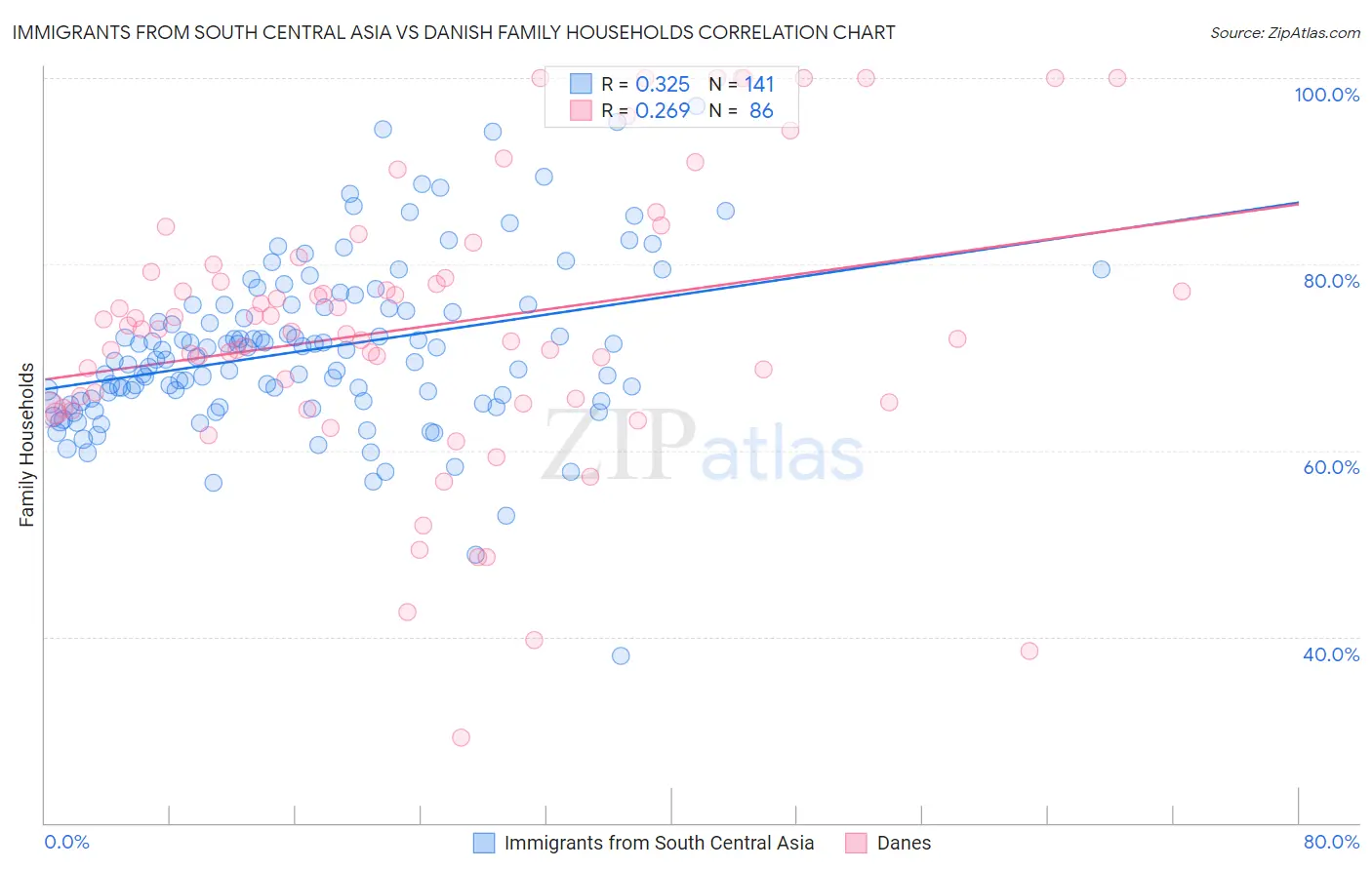Immigrants from South Central Asia vs Danish Family Households
COMPARE
Immigrants from South Central Asia
Danish
Family Households
Family Households Comparison
Immigrants from South Central Asia
Danes
66.4%
FAMILY HOUSEHOLDS
100.0/ 100
METRIC RATING
49th/ 347
METRIC RANK
66.0%
FAMILY HOUSEHOLDS
100.0/ 100
METRIC RATING
61st/ 347
METRIC RANK
Immigrants from South Central Asia vs Danish Family Households Correlation Chart
The statistical analysis conducted on geographies consisting of 472,677,474 people shows a mild positive correlation between the proportion of Immigrants from South Central Asia and percentage of family households in the United States with a correlation coefficient (R) of 0.325 and weighted average of 66.4%. Similarly, the statistical analysis conducted on geographies consisting of 473,910,388 people shows a weak positive correlation between the proportion of Danes and percentage of family households in the United States with a correlation coefficient (R) of 0.269 and weighted average of 66.0%, a difference of 0.59%.

Family Households Correlation Summary
| Measurement | Immigrants from South Central Asia | Danish |
| Minimum | 37.9% | 29.2% |
| Maximum | 97.0% | 100.0% |
| Range | 59.0% | 70.8% |
| Mean | 70.8% | 73.3% |
| Median | 69.8% | 72.9% |
| Interquartile 25% (IQ1) | 65.3% | 65.2% |
| Interquartile 75% (IQ3) | 75.5% | 79.2% |
| Interquartile Range (IQR) | 10.2% | 14.0% |
| Standard Deviation (Sample) | 9.0% | 14.9% |
| Standard Deviation (Population) | 9.0% | 14.8% |
Demographics Similar to Immigrants from South Central Asia and Danes by Family Households
In terms of family households, the demographic groups most similar to Immigrants from South Central Asia are Immigrants from Venezuela (66.4%, a difference of 0.050%), Bolivian (66.5%, a difference of 0.070%), Navajo (66.4%, a difference of 0.070%), Native/Alaskan (66.4%, a difference of 0.090%), and Arapaho (66.5%, a difference of 0.10%). Similarly, the demographic groups most similar to Danes are South American (66.0%, a difference of 0.020%), Immigrants from Korea (66.0%, a difference of 0.030%), Central American (66.0%, a difference of 0.030%), Immigrants from Asia (66.1%, a difference of 0.050%), and Immigrants from Indonesia (66.0%, a difference of 0.070%).
| Demographics | Rating | Rank | Family Households |
| Venezuelans | 100.0 /100 | #45 | Exceptional 66.5% |
| Arapaho | 100.0 /100 | #46 | Exceptional 66.5% |
| Bolivians | 100.0 /100 | #47 | Exceptional 66.5% |
| Immigrants | Venezuela | 100.0 /100 | #48 | Exceptional 66.4% |
| Immigrants | South Central Asia | 100.0 /100 | #49 | Exceptional 66.4% |
| Navajo | 100.0 /100 | #50 | Exceptional 66.4% |
| Natives/Alaskans | 100.0 /100 | #51 | Exceptional 66.4% |
| Colombians | 100.0 /100 | #52 | Exceptional 66.3% |
| Afghans | 100.0 /100 | #53 | Exceptional 66.3% |
| Immigrants | Colombia | 100.0 /100 | #54 | Exceptional 66.3% |
| Immigrants | Immigrants | 100.0 /100 | #55 | Exceptional 66.1% |
| Immigrants | Hong Kong | 100.0 /100 | #56 | Exceptional 66.1% |
| Pennsylvania Germans | 100.0 /100 | #57 | Exceptional 66.1% |
| Immigrants | Asia | 100.0 /100 | #58 | Exceptional 66.1% |
| Immigrants | Korea | 100.0 /100 | #59 | Exceptional 66.0% |
| South Americans | 100.0 /100 | #60 | Exceptional 66.0% |
| Danes | 100.0 /100 | #61 | Exceptional 66.0% |
| Central Americans | 100.0 /100 | #62 | Exceptional 66.0% |
| Immigrants | Indonesia | 100.0 /100 | #63 | Exceptional 66.0% |
| Pima | 99.9 /100 | #64 | Exceptional 65.9% |
| Costa Ricans | 99.9 /100 | #65 | Exceptional 65.9% |